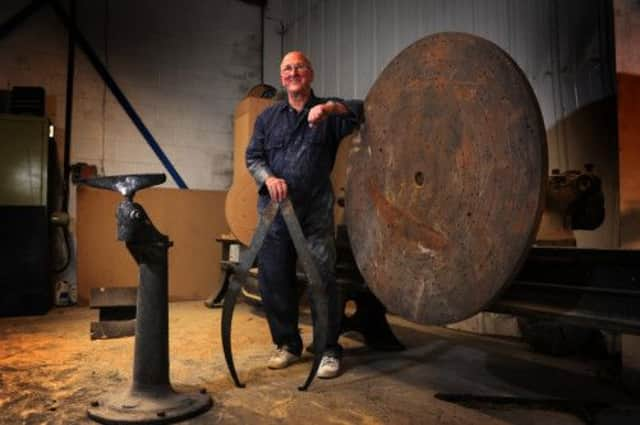Video: Machine that made the Dambusters now turning out jukeboxes in Leeds


But the Dambusters raid was possible thanks in part to a Yorkshire firm which helped to develop the famous bouncing bomb that destroyed three critical dams in the munitions-producing Ruhr region.
Today, exactly 70 years on from the strike, the lathe used by Leeds firm Dawson’s Pattern Works to make prototypes for the weapon is still going strong.
Advertisement
Hide AdAdvertisement
Hide AdThe machine tool is now used to make components for jukeboxes after the family firm was bought by manufacturer Sound Leisure, of Cross Gates, Leeds, in 2011.


Managing director Chris Black said: “Every machine we send out has an extra history involved with it and we all feel quite proud to own this lathe now and actually be using it every day.
“There are not many people in the world that can say they’ve got such a piece of history within their own business and this is just a lovely story to tell people when they come in and look at the machines we sell.”
The military and strategic significance of the raid, which destroyed three dams on the rivers Möhne, Sorpe and Eder, has only just been realised as the 70th anniversary of the mission is marked today, according to one aviation historian.
Advertisement
Hide AdAdvertisement
Hide AdRetired fighter pilot Clive Rowley, a former commanding officer of the RAF’s prestigious Battle of Britain Memorial Flight (BBMF), also paid tribute to the courage and skill of the 133 young men who went on Operation Chastise – 56 of whom never returned.
“You were asking these men to fly these enormous bombers with 102ft wingspan at 100ft – 60ft on the attack run – in the dark,” he said.
“I’ve spent a lot of my life as a fighter pilot flying around at low level normally at 250ft in fast jets, sometimes lower, often quite a bit faster than the Dambusters flew, but generally in daylight.
“I can state categorically that the courage, the skill, the tenacity to carry on doing what they were doing – and actually it would appear that they were enjoying the thrill of it – is nothing short of amazing.
Advertisement
Hide AdAdvertisement
Hide Ad“It was a combination of bravery, skill, ingenuity, science, technology, all came together in this one precision raid.”
The mission, immortalised by 1955 film The Dam Busters, starring Michael Redgrave and Richard Todd, was launched from RAF Scampton, near Lincoln, by 617 Squadron and took place on May 16, 1943.
The strike disrupted water and electricity supplies in a key area for the manufacture of Germany’s tanks, aircraft and ammunition, and was hailed as an incredible success at the time, even with the loss of life. But for decades afterwards, historians downplayed the effects of the strike, with some condemning it as a waste of resources.
Now, research carried out by Mr Rowley suggests the loss of water caused by the dams’ destruction had a far greater effect than many realised even at the time – from making firefighters powerless to put out the flames of British incendiary bombs to cutting vital German steel production due to a lack of water for cooling.
Advertisement
Hide AdAdvertisement
Hide AdThe cost of repairing the damage ran to the equivalent of £5.9bn in today’s money and 7,000 workers who would otherwise have been building the Atlantic Wall to prevent the D-Day landings had to be called away to fix the ruined dams.
It was an economic disaster for the Third Reich that diverted significant resources away from Germany’s war effort at a critical point during the conflict.
Four power stations were destroyed along with 12 war production factories and about 100 other factories were damaged. Railway bridges were also knocked down, and 3,000 acres of farmland destroyed.
Coal production also dropped by 20,000 tonnes and steel production by 180,000 tonnes in the month that followed.
Advertisement
Hide AdAdvertisement
Hide AdMr Rowley said: “In that sense it was truly militarily important, strategically important, and I think that is more modern research that has uncovered that and hasn’t been widely recognised until now.”
The timescale in which the raid came about – the Lancaster had only been in squadron service for 17 months, and there were only 56 days from the squadron’s formation to the bombings – was nothing short of amazing, he added.
“Forty-two per cent of the men that went on the raid did not come home, and they knew that was highly likely, yet they volunteered for the mission. They wanted to make a difference,” he said.
Remembering and commemorating the mission, especially with such heavy losses, was vital – and even more so now to acknowledge the full extent of the effect on Nazi Germany, he added.
He said: “It is important to recognise it was worthwhile and the results were worth their death, if anything ever is worth a man’s death.”